It is tempting, when you see a contest listed on a blog or website, to whip out a story and to send it in promptly. It is tempting, when you hear of a magazine’s or publisher’s call for submissions, to spin off a piece that will suit the theme and to submit it soon before the editor’s slush pile grows. It is tempting, when a story idea bursts upon you, to write the new adventure and share it with friends — immediately.
Obviously the theme here is to anxiously — prematurely — send our ideas out into the world without the proper time and sweat given to editing and rewriting. I don’t mean to presume that there is no editing, but is there enough?
Sometimes we really don’t step back from our work long enough to be able see its flaws objectively.
If you are submitting a story for publication or for a contest, you will likely need or want help with the editing. But there is much you can do on your own before an editor takes his or her turn with your manuscript.
#1 — The first step in self-editing I already mentioned above. That step is to give your manuscript time and space to rest — the longer, the better. If you can ignore it for a month, that’s great. But even if it’s only for a few days, you’ll find things popping out in your re-read that you didn’t see before. The longer you can let a manuscript sit on its own, exiting your mind, the fresher you’ll be when you approach it again, and the clearer you’ll see the problems that need to be addressed.
#2 — Go through the manuscript looking specifically for content edits. Content edits are those Big Things that make a scene richer, more satisfying or more intense — dialogue that could be added, themes that could be expanded, characters that could be given fuller life. Sometimes you may need to decide if a scene should be completely re-written or cut entirely. In the process, you might also catch typos and be on the lookout for errors such as showing a character with green eyes in one scene who accidentally appears with brown eyes in another. But on your first go-through, it’s best to focus on the big picture — the content.
#3 — Set it aside again. After you come back to it a few days or weeks later, start the line edits. Now look for all those grammatical problems, typographical errors, punctuation gaffes, capitalization and paragraph issues, inconsistencies like eye color and so on. You may rediscover more content changes. You might notice sudden mistakes in setting, historical detail, and other minutia that slipped by. But really get that manuscript clean from an English teacher’s point of view.
#4 — A third read-through is always good — after letting it sit for a while of course! You will unveil still more story details you need to address. Or you might just find a better way of writing a sentence. You might choose a clearer verb here, delete an adjective there. But you’ll notice that the whole manuscript is getting shinier and richer.
There is no perfect way to go about editing. Some writers rewrite a multitude of times. I probably review my own manuscripts an average of six to ten times before I feel they’re ready to submit. Most authors feel that they’ll never really get it as right as they hope to, but they keep trying. Rare is the author who succeeds on the first or even the second try. But at some point, you’ll know it’s time to let it go.
If you’ve never submitted anything before, or have faced many rejections (but hopefully haven’t given up) it could mean your first submission should go to a freelance editor or critique partner — someone you know with killer editing skills who will help you give your story another go-over. When it’s the best you can possibly make it, send it off.
There is always room for improvement. You’ll know you’re a writer when you realize learning and improving craft will take a lifetime.
Exercise:
- Select a piece you finished in the past (at least a month ago).
- Read through it with fresh eyes. If you are working on a computer, save a working copy with a slightly different file name. (Like a movie director, you may try again with “Take 2,” “Take 14,” or even “Take 37”!)
- Experiment with content edits and line edits.
- Let both versions rest a few days, then read them again to see which you prefer.

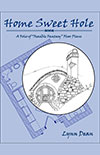


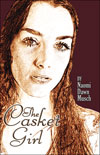
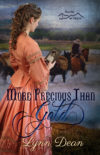
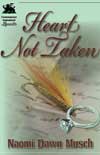

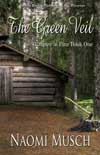




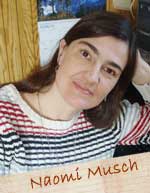


All excellent points, Naomi. However, I do have a hard time letting my rest. I usually want to tackle edits right away, but usually I’ve had several people go over it as each chapter is finished, so it’s been a while since I’ve started at the beginning.
On my latest WIP, I have so many minor characters that it’s hard to keep up with names. That’s why a chart will all that info in your files is so important. Something else I always have to be careful with is time sequence and make sure it’s correct. If your story spans two years, make sure your reader is aware of the season changes, events in each, etc.
Echoes are a problem for me. Sometimes a search for those as well as those telling words–that, had, was to name a few are changed to active words.
I don’t know about you, but my computer thinks it’s smarter than me. So, I find really quirky errors. Most times I catch them as I work. I know…I should go in and change that setting but haven’t done so yet. But, I so agree that edits are a time to add more expression to your characters, include more of the senses, correct those boring dialogue tags and delete the information that does not move the story along.
Thanks for the awesome article and reminder on certain details. And now, back to my editing!
You bring up some great points to remember, Linda. Having someone else act as a beta reader is always helpful if you can count on them to give the necessary feedback and to point out those character/time/setting issues.
I also have to watch for those telling words. “That” has been a particular problem of mine as well as starting sentences with “It”.
I also have to keep careful files for those characters. I started using Scrivener last fall, and that makes it a bit easier to quick reference, but it doesn’t do as good a job at watching for grammatical errors. However, like you mentioned, you can’t really depend on those computers to do it correctly all the time anyway. 🙂
Thanks so much for dropping by and adding to the dialogue. I appreciate your input!
Blessings~
Naomi
Loving the comment thread and learning from the ideas shared.
“It” and “that” are problem words for me as well. I usually find
thatI can simply eliminate “that”, and my sentences are usually more interesting if I spell out what “it” is.So glad you mentioned Scrivener! I’ve begun using it as well, and I love the bulletin board for plotting. Lets me move stuff around. 🙂 In addition, Scrivener has a tool to help you prepare your manuscript for self-publishing on Kindle (and maybe some other formats). You can download a trial version and use it 30 days for free, and the program is very reasonably priced at around $40 when you decide you love it.